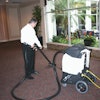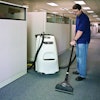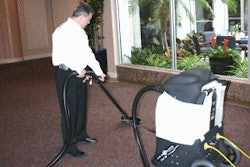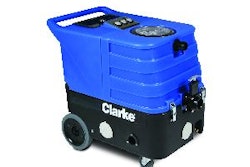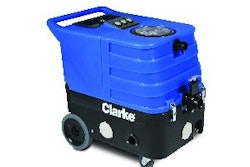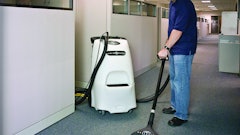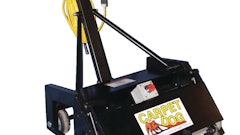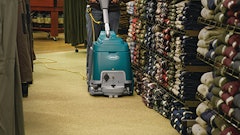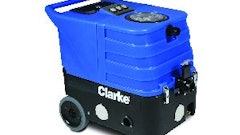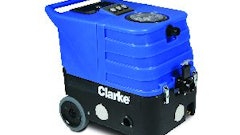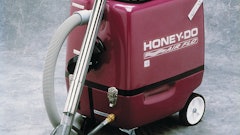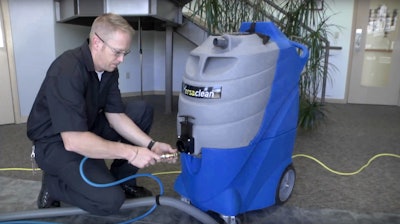
It’s a given in the rental business: Once a piece of equipment goes out your door, no matter what it is, you really don’t know how it’s being used. Yes, when it comes to big equipment, modern technology can help you keep tabs on its use. But for smaller items, take carpet cleaners for example, once they leave your store, how they were used is a mystery that might never be solved, or need to be solved for that matter. Unless, of course, they come back unclean, or worse yet, unclean with some bacteria or ugly fungus that your next carpet cleaning customer will inherit.
The dirty facts
Customers are asked, even encouraged with a penalty fee, to return carpet cleaning equipment clean. Some do, some don’t. Those who do might at best run warm, clean water through the machine to remove the dirty soap. Looking clean, however, does not mean the unit is clean. Cross-contamination from unseen contaminants is possible. It’s up to you to ensure the carpet cleaner is thoroughly cleansed for the next customer.
There can be plenty to clean, according to Scott Warrington, 35-year veteran of the carpet cleaning industry and accessory, machine brand manager for Utah-based Bridgewater Companies and Interlink Supply. “Carpets not only collect soil tracked in on the bottom of shoes, they have also proven to be great filters. Much like the filter in an HVAC system, air is constantly passing through carpets, the fibers of which filter out pollutants and contaminants. That’s why air above a carpet is much cleaner to breathe than the air above a hard floor such as wood, tile, and polished concrete that do not filter and capture particles from the air.
“Carpets can host a wide range of contaminants from dry particle soils as well as sticky, oily, and greasy soils to biologicals and more. Some of these are potentially harmful. Others are simply soil sources that should not be transported from one site to another."
He continues, “A blob of jelly from your neighbor’s carpet or someone else’s from around town, for example, may not be harmful to you or your children. But it certainly isn’t something you want on your carpet, the one in fact you are trying to clean with a rental unit. If your children have allergies or sensitivities to dust mites or animal dander that adhered to the cleaning tools, that would be of more concern than the jelly, of course.”
Of even more concern, as one rental store owner recently related, are bed bugs. “I stopped renting rollaways a few years back because I didn’t want to take the chance that bed bugs could be carried from one home to another. I wonder, too, if they could be transported by carpet cleaners.”
It’s a valid question and there are other concerns. Carpet cleaning has been mentioned as a possible cause of Kawasaki Disease, a rare but serious illness that mainly affects young children. Warrington emphasizes, however, that the cause of the disease is a virus unlikely to be spread by cleaning carpets. Still, as he points out, the damp environment of a carpet cleaning machine can harbor mold spores and bacteria. It’s just one more reason to thoroughly clean and sanitize carpet cleaners before sending them out the door with another customer.”
Take the time
If there’s one obstacle to cleaning a carpet cleaner, it’s time. Properly cleaning and sanitizing a machine between uses will take more than a few minutes. But it’s time well spent, according to Legend Brands Director of Restoration Chemicals Bill Weigand.
“Rental carpet cleaning units should be cleaned and sanitized between uses and that includes the carpet wand, the interior and exterior of the vacuum hose, the exterior of the supply line and the unit itself. Special attention should be given to the recovery tank where the highest level of microbial contaminants is likely to be deposited.”
Key to the process is the cleaning solution and dwell time, he adds. “A solution such as Microban Germicidal Cleaner Concentrate will kill a wide array of microbial life, something that is essential to prevent cross contamination between homes and other structures.
“Mix the cleaning solution according to label directions and apply it (typically with a trigger sprayer). Allow the product to sit on the surfaces for the recommended dwell time, normally about 10 minutes. The surfaces can then be wiped clean and dried.”
Weigand points out that the interior of the vacuum hose is slightly more difficult to treat for contamination. To treat, immerse the hose in the cleaning solution for the product’s recommended dwell time and then wipe dry.
Two-step process
“Good sanitizers make poor cleaners and good cleaners make poor santizers. So cleaning should be a two-step process. First clean, and then apply the sanitizer,” advises Warrington. “Hence the first step in sanitizing/disinfecting is a thorough cleaning. Nearly all common sanitizing/disinfecting solutions are inactivated or rendered less effective by the presence of soils, especially from organic or biological sources.”
He continues, “Four factors (often referred to as the cleaning ‘pie’) influence how thorough cleaning and sanitizing will be. They are: proper chemical, temperature (or heat), dwell time, and agitation. These factors are also known by their acronyms CHAT (chemical, heat, agitation, and time) or TACT (temperature, agitation, chemical, time).
“The sanitizing solution must reach all possibly contaminated surfaces. Then it needs time to work. Most products will have information on the label that specifies dwell times necessary to kill certain bacteria or viruses.”
A major failing in proper sanitation, he emphasizes, is not allowing the cleaning product to remain in contact long enough on the surface. “The surface being sanitized needs to remain wet with the sanitizing solution for between 10 to 20 minutes. Usually there is no requirement to wipe off a sanitizer or disinfectant.”
The solution
Rental stores can select from a wide variety of sanitizing chemicals on the market. The most commonly used for cleaning equipment, Warrington notes, are quaternary ammonium chloride compounds (usually shortened to “quats”) and phenols.
“Quats can be rather highly diluted and still be effective, making them more cost effective than some other products. Phenols are more effective against some specific bacteria or viruses, making them the cleaner of choice in high contamination situations such as cleaning up after sewage back flow. Bleach and other oxidizers have limited effectiveness and are corrosive to metals. So, if they are used, an additional step of thorough rinsing is required.”
As both Warrington and Weigand reiterate, a clean rental unit doesn’t always translate into one that’s free of bacteria or other potentially harmful contaminants. Rental machines need to be cleaned and sanitized before being offered to your next rental customer.
